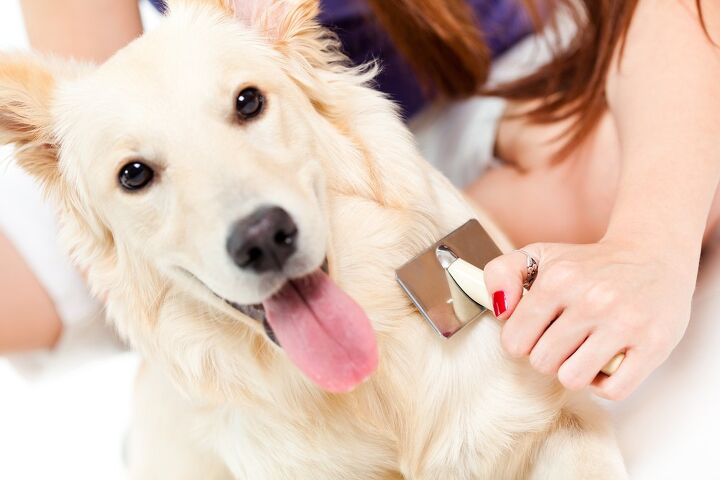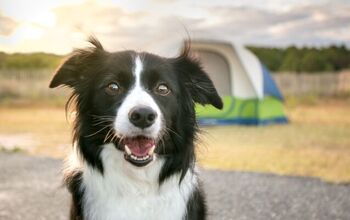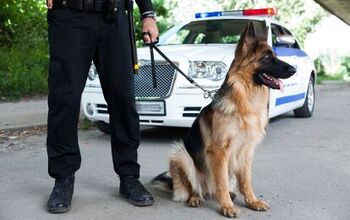Dog Brushes: Which One is Best for Your Dog’s Coat?

Grooming your dog is about more than just getting rid of excess hair. It helps remove loose and dead hairs from your dog’s coat to reduce shedding and it distributes the natural oils produced in his skin, keeping his coat shiny and soft. Brushing your dog is also a great way to spend some quality time together, building your bond.
Dog brushes are a dime a dozen, so how do you know which one is the right choice for your dog? Keep reading to learn about the different types of brushes and how to choose.
Related: Brushing Your Dog: A Guide for All Coat Types
When you head to the pet store to pick up a dog brush for the first time, you may not realize just how many different options there are. Before you can pick the right brush for your dog, you need to understand the different types:
- Slicker Brush – This type of brush usually has a very wide head with fine wire bristles. A slicker brush helps remove knots and tangles but can also remove loose hair from the undercoat.
- Rake – Also known as an undercoat rake, this brush features long metal teeth that can penetrate the top coat and get to the undercoat beneath to remove dead hair to reduce shedding.
- Bristle Brush – These brushes work for all coat types and they primarily work to smooth your coat’s coat and distribute the natural oils produced in his skin. Bristle brushes differ in the size, spacing, length, and stiffness of the bristles.
- Pin Brush – This type of brush has wire bristles tipped with plastic or rubber. They work best for medium-to-long coats and can also be good for wooly or curly coats.
- Shedding Blade – Though the name sounds harsh, this is simply a horseshoe-shaped comb with tiny teeth that works to remove loose fur from many types of coats.
Slicker brushes can be used on any type of coat, but they are particularly beneficial for long and medium coats. Undercoat rakes are primarily for dogs with double coats and dogs with very thick or heavy coats. Bristle brushes come with different bristle lengths and spacing, so you can choose the one that is right for your dog’s coat – the same is true for pin brushes.
Related: All About Hand Stripping
When brushing your dog, it is important to always move in the direction the hair is growing. If you brush your dog’s coat in the wrong direction, it could be uncomfortable or even painful for him. Start at the base of your dog’s neck and work your way slowly down the back toward his tail. Next, move down the sides and brush the fur on each leg as needed. From there, you can brush your dog’s chest and belly, being careful not to hurt him.
Regular brushing is an important part of taking care of your dog. Not only does it help reduce shedding, but it keeps the natural oils produced in his skin from building up on the surface. Brush your dog at least once a week, or more often for long and thick coats.

Kate Barrington is the loving owner of two cats (Bagel and Munchkin) and a noisy herd of guinea pigs. Having grown up with golden retrievers, Kate has a great deal of experience with dogs but labels herself a lover of all pets. Having received a Bachelor's degree in English, Kate has combined her love for pets and her passion for writing to create her own freelance writing business, specializing in the pet niche.
More by Kate Barrington






















